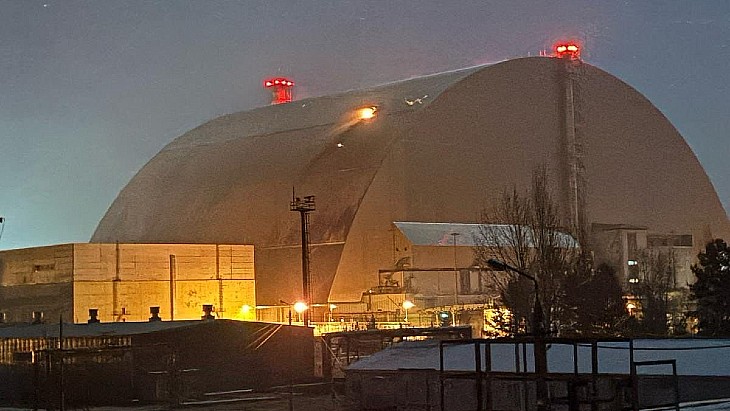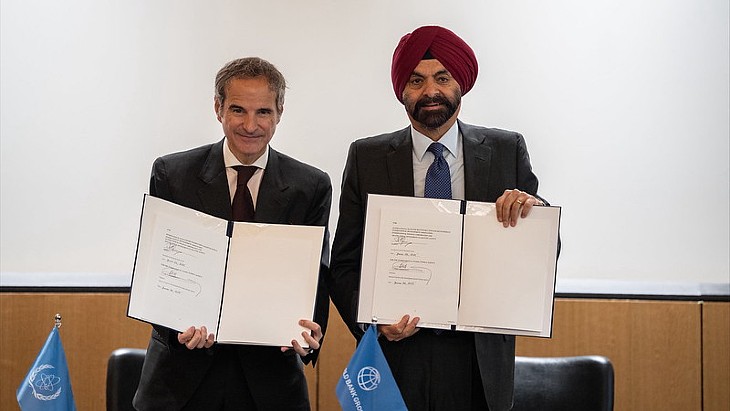Robot to examine fuel debris in Fukushima unit
.jpg)
A pre-investigation of the area directly below the pressure vessel - known as the pedestal - was carried out in January 2017 at Fukushima Daiichi 2 using a remotely operated camera on a telescopic probe. Photos taken during that investigation showed a black mass and deposits near a grating in the pedestal area, possibly melted nuclear fuel.
The following month, Tokyo Electric Power Company (Tepco) sent a "scorpion-shaped" robot - developed jointly by Toshiba and the International Research Institute for Nuclear Decommissioning (IRID) - into the PCV of unit 2. Although the robot was unable to reach the part of the vessel directly under the reactor pressure vessel, the company said the information it gathered would help it determine how to decommission the unit.
In January 2018, an internal investigation of the PCV of unit 2 using a suspended pan-tilt camera attached to a telescopic guiding pipe identified deposits and fuel assembly components at the bottom of the pedestal area.
Yesterday, a robotic device developed by Toshiba Energy Systems & Solutions Corporation was unveiled that will be used to explore these deposits. The device - approximately 30cm in length and 10cm in width - features a camera, LED lighting, a pan-tilt mechanism, finger drive mechanism (tongs), radiation dosimeter and a thermometer.
"Using know-how cultivated through previous investigations at the Fukushima Daiichi nuclear power plant, Toshiba ESS added a finger drive mechanism for touching the deposits to investigate their condition to the telescopic guiding pipe developed last January," the company said.
"Until now we have only seen those deposits, and we need to know whether they will break off and can be picked up and taken out," Jun Suzuki, a Toshiba ESS group manager for the project, told Japan Today. "Touching the deposits is important so we can make plans to sample the deposits, which is a next key step."
The robotic device is scheduled to be deployed to investigate the interior of unit 2's PCV next month.
Tepco has also carried out robotic surveys of the PCVs of units 1 and 3 at the Fukushima Daiichi plant.
In March 2017, Tepco carried out an investigation of the PCV of unit 1 using the PMORPH robot developed by Hitachi-GE Nuclear Energy and IRID. Equipped with a dosimeter and waterproof camera, it took radiation readings and digital images at ten different measurement points within that unit's PCV.
In July that year, it inserted a screw-driven submersible robot developed by Toshiba and IRID into unit 3's PCV.
Goro Yanase, vice president of Toshiba ESS's Nuclear Energy Systems & Services Division, said: "We will continue to advance technology development and contribute to investigation of the interior of the Fukushima reactors."









..._58412.jpg)

